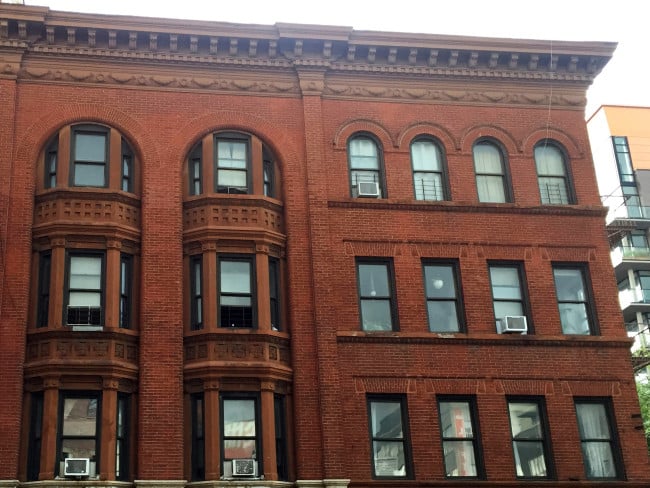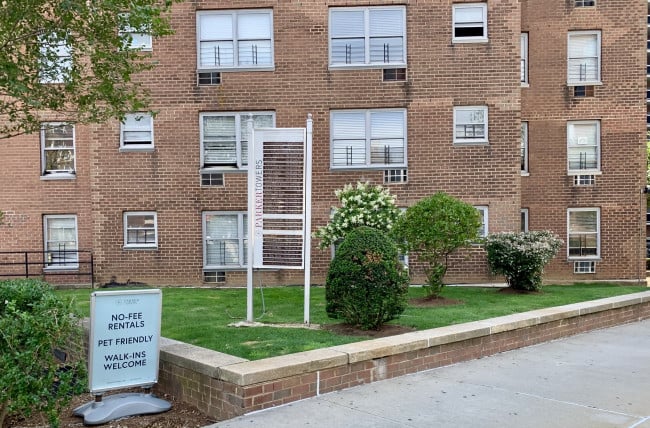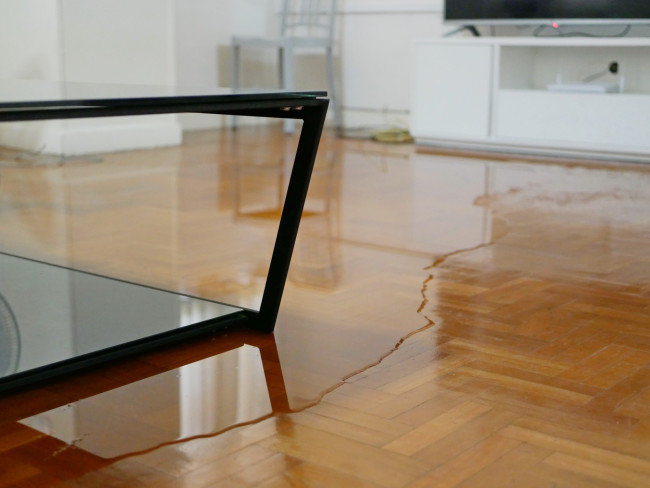6 steps to deal with flood or water damage in your NYC apartment
- You need to find the source, remove the water, assess for mold, and remediate
- Be sure to document the damage for your insurance company, landlord, or board

After getting rid of the water, you'll need to check for mold and then do repairs.
iStock
Water damage in your basement or ceiling is one of the most dreaded headaches for apartment and home owners, and it is something New Yorkers now experience regularly as a result of climate change, which makes large storms more intense and more frequent.
But it doesn't take a major hurricane to do some damage—even a relatively small amount of water can be destructive.
Backed up pipes, a blocked roof drain, neighbor's leaking deck, or faulty sump pump—whatever the reason for the damage, the solution is the same. You need to find the source, remove the water, assess for mold, do additional remediation if necessary, and then replace what's damaged. There’s also the paperwork to deal with—addressing the problem with your insurance company and landlord when relevant, or your co-op or condo board.
[Editor's note: A previous version of this article was published in September 2021. We are presenting it again with updated information for August 2024.]
1. Find the source of the water
Before you can move forward, you need to establish the source of the leak or damage. Depending on the circumstances, this might involve the expertise of professionals like an engineer, plumber, roofer, or foundation expert.
“If you don’t stop the water from coming in, there’s little point of trying to manage the water that’s already there,” said Jeffrey Gross, regional vice president at First On Site, a New York property damage restoration firm.
2. Remove the standing water in your apartment
Your next step is to deal with the standing water that's inside your place, by extracting, pumping, or mopping up what's on the floor. The sooner you are able to do this the better, Gross said.
"If you have a basement and there are six inches of water and you have no means of doing it immediately but could get someone the following day, that would be ok, but if you're on the 19th floor and you have two inches of water, it's a more urgent requirement," he said.
3. Limit further damage from excess moisture
With water damage, you need to move fast to protect both the building and the furnishings. Once you've removed the water, you may need to move furniture out of harm's way and prevent the water spreading and doing even more damage.
"Sometimes it’s as simple as keeping the door closed and putting a towel under the door or picking up furniture and moving it to another location. Other times it is getting professionals involved to move things out," Gross said.
One strategy Gross's team uses is to put furniture that can't be easily moved onto foam blocks. "This can allow air flow underneath the furnishings and allow them to dry out and prevent secondary damage to them," he said.
Based on how insurance polices are written, Gross said you have an obligation to make every attempt to mitigate the damage and prevent secondary or further damage. "Some people are paralyzed by the event and want everyone to see it before anyone touches anything." Don't do this, he said. Instead, take lots of photos and get a move on.
"You need to act quickly," Jeff Schneider, president of insurance company Gotham Brokerage, said. "Remember it can take several weeks for a floor to dry out completely, before you can see the extent of the damage."
4. Figure out the extent of the water damage
Part of the next step is establishing the extent of the damage. In some cases there is very little standing water because it's been absorbed by the dry wall, said Perry Hiiman, owner of the company New York Total Damage Restoration.
Gross said his team will take moisture readings and visually inspect surfaces and materials to determine where the water might have traveled. Predicting where the water has reached isn't impossible but very often it is difficult to confirm. "We are looking for moisture trapped in wall cavities, behind built-ins, things like that," Gross said.
Don't be surprised if you hear the term "strategic demolition." Gross said to dry out cavities or pockets where moisture can hide you may need to make some holes in the wall. Double-layer dry wall, something used in modern buildings, can be challenging to dry and it can be complicated when a wall separates two apartments or an apartment and a public space, and remediation creates security and privacy issues.
Other options include dehumidifiers and maximizing air movement. Anything that cannot be dried needs to be removed.
5. Deal with any mold in your apartment
One of the biggest issues with hidden water is mold. "It starts behind the walls," Hiiman said. He pointed out removing soggy insulation or damp dry walling is part of the remediation process but it needs to be done within a month of the damage. "It cannot wait—mold can be very toxic and it is not healthy," he said.
Gross said after the place is dried out, but before you proceed with construction, if you have any concerns or if there are any odors, it's time to get a qualified mold assessor to do an independent test. They will take air samples and compare the samples to unaffected areas. "A mold assessor will make an evaluation on whether the place is considered ready for repair," he said.
The question of dealing with severe mold in a rental was addressed during a live Q&A by tenant attorney Sam Himmelstein, now retired from Himmelstein McConnell Gribben and Joseph.
"It's essential to get a knowledgeable, reputable, company to come in and do mold testing because your observation of the mold doesn't mean very much in court," Himmelstein said.
Mold is a violation of the warranty of habitability in NYC rentals and co-op buildings and while complaints to the Department of Housing Preservation & Development will result in an inspection, "only if there's visible mold will they place a violation," Himmelstein said.
Local Law 55 requires owners of buildings with three or more apartments keep their tenants’ apartments free of mold and pests and this includes safely fixing the conditions that cause these problems.
If the area of mold to be cleared is more than 10 square feet in buildings with 10 or more units, owners or managers are required to use New York State Department of Labor-licensed mold assessment and remediation workers to remove the mold.
You need to be especially diligent if sewer water was present, Hiiman said.
6. Repairing and restoring the damage
When it comes to liability, it will depend on the type of damage and the type of apartment in which you live.
Schneider pointed out a flood from rising waters or excessive rainfall is covered only under a separate flood policy, usually issued by FEMA, but purchased through agents. "The water level has to hit the level of your apartment. So if you are on the fourth floor and you have a flood claim, you—and we all—have bigger problems," he said.
Some restoration companies will take care of all the time consuming administrative work as well as the remediation and repairs. Gross suggested you ask for very detailed estimates so the work can be split up or broken out if necessary based on liability. Most of all, he said, don't get pushed around. "It’s your home, you get to decide who fixes it—no one can tell you who to use."
—Earlier versions of this article contained reporting and writing by Emily Myers. This article was updated for August 2024 by Jennifer White Karp.
You Might Also Like


























